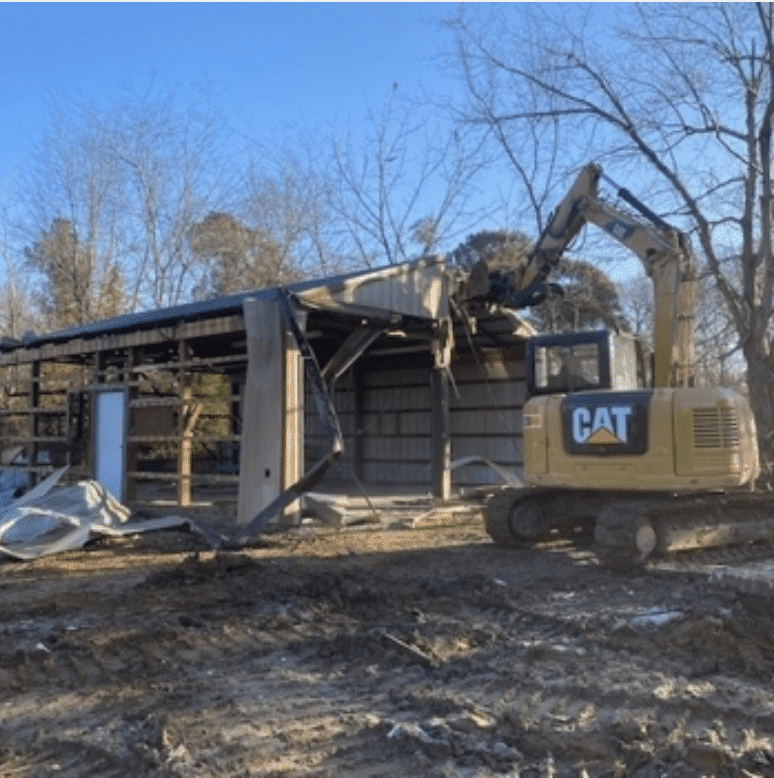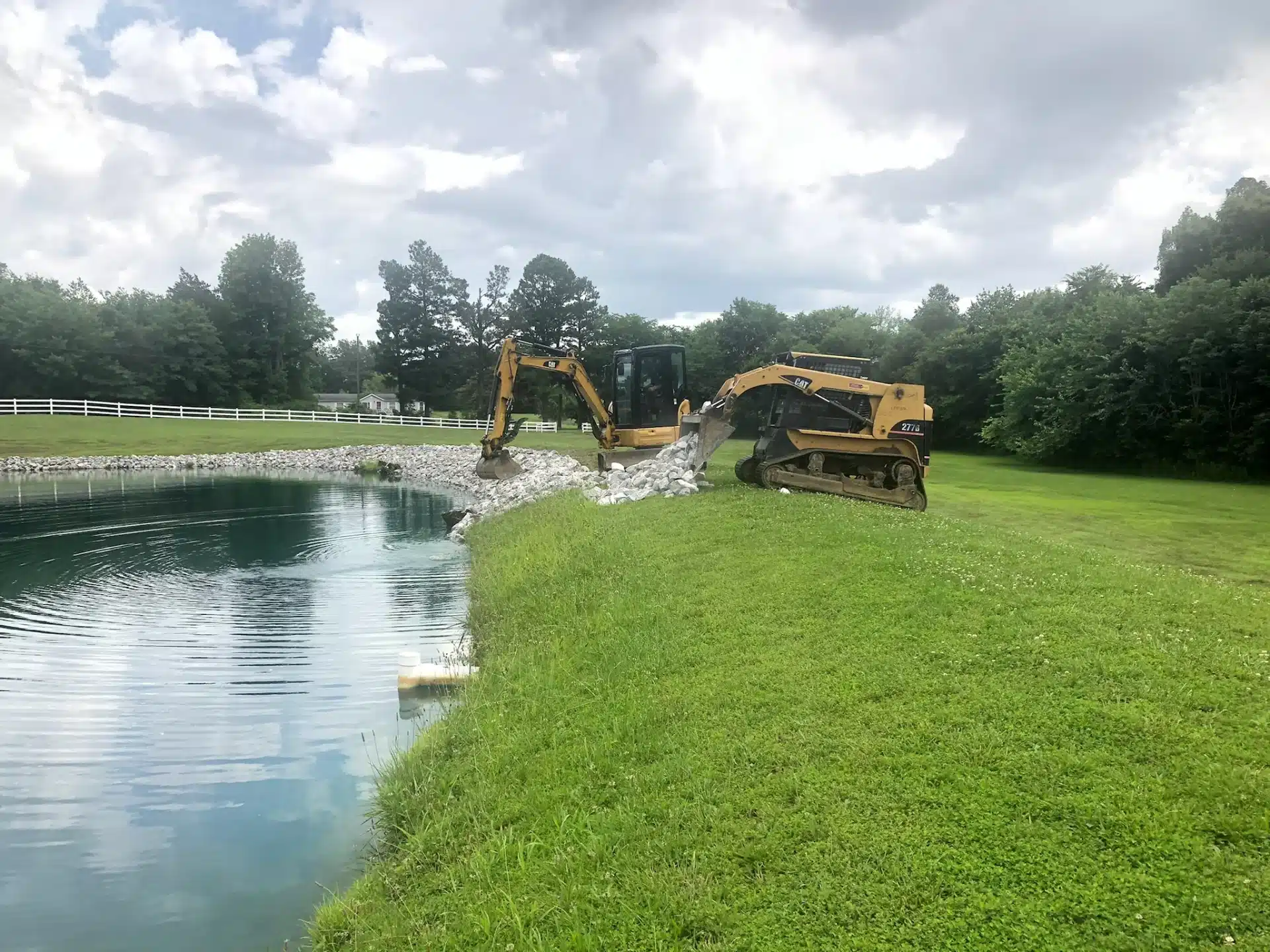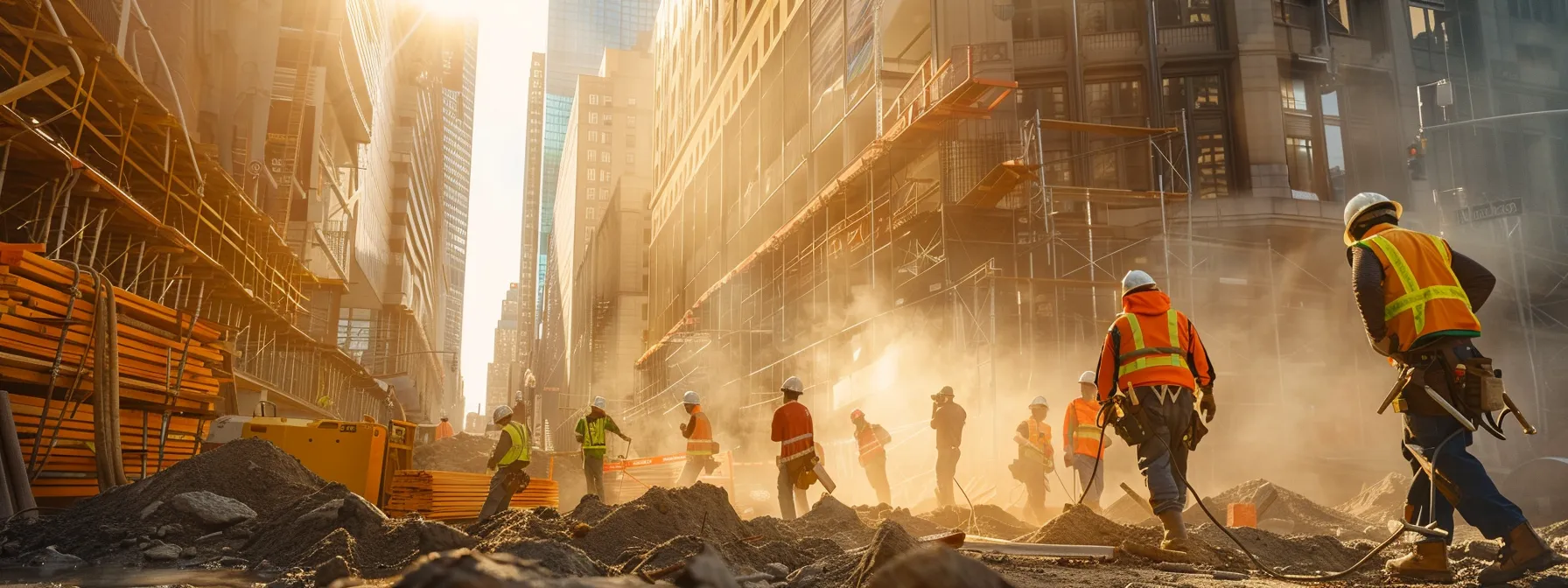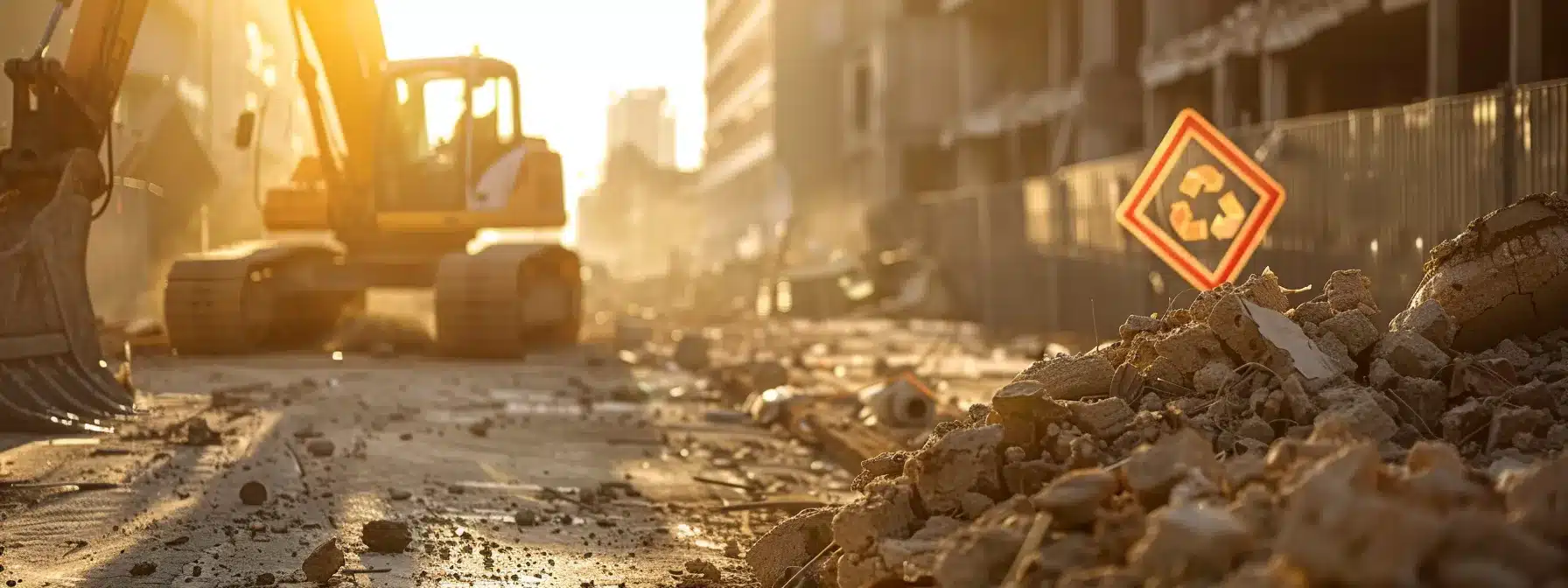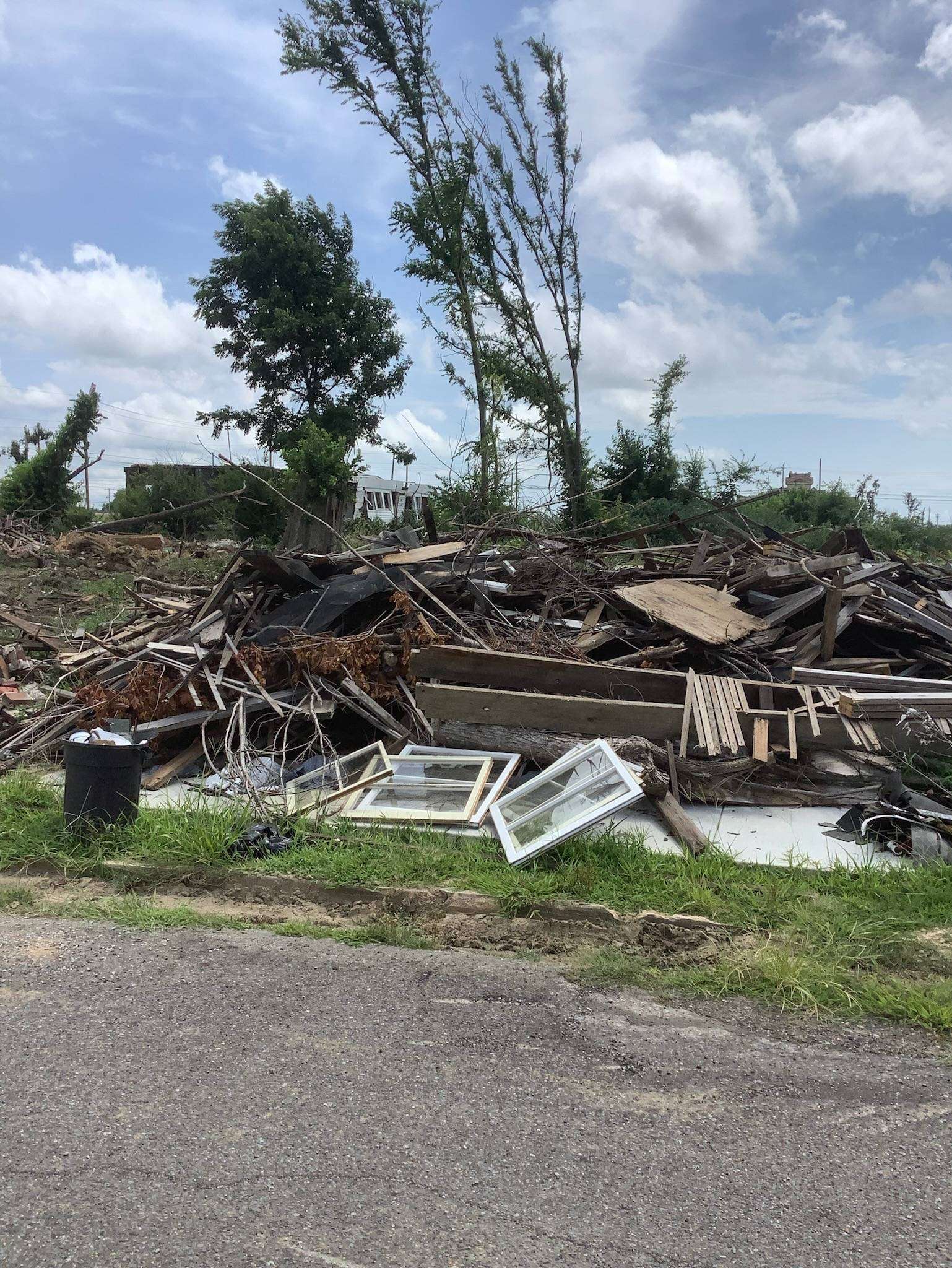Landscaping excavation is a crucial step in transforming outdoor spaces. From trenching to land clearing, there are various techniques used to prepare the land for landscaping projects.
In this article, we will explore why excavation is necessary, the different types of techniques used, the tools and equipment required, safety precautions to be taken, and how to plan and prepare for a successful excavation project. Whether you are a DIY enthusiast or a professional landscaper, this guide will help you navigate the excavation process with confidence.
Key Takeaways:
- Landscaping excavation is the process of removing soil and other materials to create a desired landscape design.
- Excavation is necessary for landscaping to create a stable and level surface for building structures, installing irrigation systems, and planting gardens.
- The different types of excavation techniques for landscaping include trenching, grading, digging, and land clearing. These techniques require specialized tools and equipment such as excavators, backhoes, and bulldozers.
What Is Landscaping Excavation?
Landscaping excavation involves the process of removing earth, soil, rocks, or other materials from a site to prepare it for construction or landscaping activities.
Excavation is a crucial step in any landscaping or construction project as it lays the foundation for the structures and designs that will be implemented on the site. The methods used in landscaping excavation can vary depending on the scope of the project and the type of terrain. Common techniques include trenching, grading, and digging to create the desired contours and levels needed for the landscape.
- Understanding the composition of the soil and geology of the site is essential to ensure proper excavation techniques are chosen.
- Excavation also allows for proper drainage systems to be established, preventing water buildup and erosion, which are vital for the health and longevity of the landscape.
Why Is Excavation Necessary for Landscaping?
Excavation is a crucial step in landscaping as it allows for the removal of unwanted materials such as dirt, rocks, sand, or stumps, creating a stable foundation for construction and landscaping endeavors.
By removing these materials, excavation not only provides a level surface but also ensures proper drainage across the site, preventing water accumulation that could lead to erosion issues.
Excavation plays a vital role in clearing the land to make way for pathways, outdoor living spaces, garden beds, and other elements essential for a well-designed landscape.
Excavation sets the stage for setting up utilities like irrigation systems and lighting, making the subsequent construction phases more efficient and streamlined.
What Are the Different Types of Excavation Techniques for Landscaping?
Various types of excavation techniques are employed in landscaping projects, including cut and fill excavation, trench excavation, basement excavation, dredging, topsoil excavation, and muck excavation, each serving specific purposes and challenges.
- Cut and fill excavation involves cutting material from higher areas and filling lower sections to create desired elevations.
- Trench excavation is often used for laying utilities or foundations and requires narrow, deep digging.
- Basement excavation is crucial for constructing underground structures like basements or parking garages.
- Dredging is common near water bodies to remove sediments and deepen channels.
- Topsoil excavation focuses on removing the top layer of soil for landscaping or construction.
- Muck excavation deals with wet, unstable soil, requiring specialized equipment and techniques.
Trenching
Trenching involves digging long, narrow ditches in the ground to facilitate the installation of utilities like pipes or cables, making it a common technique in landscaping and construction projects.
This method is essential for various applications, such as laying drainage systems, electrical wiring, or fiber-optic cables.
When undertaking trenching, specialized equipment is utilized, including trenchers which come in different sizes depending on the depth and width requirements of the trench. Safety precautions are paramount in trench excavation due to risks like cave-ins, gas leaks, or striking underground utilities. Therefore, workers must wear proper protective gear, conduct soil inspections, and ensure proper shoring when excavating trenches.
Grading
Grading is the process of adjusting and leveling the ground surface to ensure proper drainage, stability, and landscaping requirements, playing a vital role in site preparation for construction and landscape projects.
Proper grading is essential to prevent water accumulation, which can lead to erosion, flooding, and structural damage in buildings. It also aids in creating a uniform surface for building foundations, reducing the risk of uneven settling. One of the key objectives of grading is to direct surface water away from buildings and towards designated drainage areas, ensuring the longevity of structures and maintaining the integrity of the landscape.
- Grading Techniques: Grading techniques include cutting or filling the soil, compacting it, and shaping it according to specified elevations and slopes. Using tools like graders, dozers, and compactors, grading professionals meticulously sculpt the terrain to meet project requirements and design specifications effectively.
- Outcomes of Proper Grading: A well-executed grading process results in a stable and functional site, minimizing the need for additional drainage solutions and erosion control measures. It also enhances the aesthetic appeal of the landscape, providing a solid foundation for further construction and landscaping activities.
Digging
Digging entails the removal of soil, earth, or other materials from a site to create space for foundations, basements, or landscaping features, serving as a fundamental excavation technique in construction and landscaping endeavors.
Regarding landscaping excavation, digging plays a vital role in shaping outdoor spaces and laying the groundwork for various hardscape elements like patios, walkways, and retaining walls. The process of digging involves the use of excavation equipment such as shovels, spades, backhoes, and mini excavators, depending on the scale and complexity of the project. These tools help in breaking ground, moving earth, and leveling surfaces efficiently.
Safety precautions are paramount during digging operations to prevent accidents and injuries. Before excavation, it is crucial to locate underground utilities like gas lines, water pipes, and electrical cables to avoid damaging them. Workers should wear appropriate protective gear, including helmets, gloves, and steel-toe boots, and follow proper trenching and shoring techniques to ensure stability and minimize risks.
Land Clearing
Land clearing involves the removal of vegetation, rocks, soil, or debris from a site to prepare it for construction or landscaping activities, ensuring a clean and accessible area for further development.
One of the key aspects of land clearing is the thorough assessment of the site to determine the most efficient method to clear the land without causing damage to the surrounding environment or structures.
This process requires the use of specialized equipment such as bulldozers, excavators, and mulchers to efficiently remove obstacles and create a blank canvas for the intended project.
Additionally, environmental considerations play a crucial role in land clearing, with measures in place to mitigate erosion, protect wildlife habitats, and preserve water quality during the clearing process.
What Are the Tools and Equipment Used for Landscaping Excavation?
Landscaping excavation requires the use of specialized tools and equipment such as excavators, backhoes, bobcats, and bulldozers to efficiently and effectively perform excavation tasks.
Excavators, also known as diggers, come in various sizes and can handle a wide range of excavation jobs, from digging foundations to trenching. They offer exceptional power and versatility, making them essential in large-scale landscaping projects.
Backhoes, on the other hand, are versatile machines that combine the features of a loader and an excavator, perfect for digging, lifting, and loading materials efficiently.
Bobcats, compact and agile, are ideal for navigating tight spaces and handling lighter excavation tasks with precision.
Bulldozers, with their immense pushing power, are crucial for leveling terrain and clearing debris on construction sites.
Excavators
Excavators are heavy construction machines used for digging and moving large quantities of soil, rocks, or debris, making them essential in landscaping excavation for creating foundations, basements, or trenches.
These powerful machines come in various sizes, from compact mini excavators for tight spaces to larger models for heavy-duty projects.
- One of the key features of excavators is their ability to rotate 360 degrees, enabling precise digging and efficient material handling.
- Excavators are equipped with hydraulic cylinders that power the boom, arm, and bucket, allowing operators to perform a wide range of tasks with ease.
The versatility of excavators extends beyond digging; they can be outfitted with specialized attachments like grapples, compactors, and augers for tasks like demolition, trenching, and loading.
Backhoes
Backhoes are versatile machines equipped with a digging bucket and a loader, enabling them to excavate, load, and move various materials like dirt, sand, or debris, making them essential in landscaping excavation projects.
One of the significant advantages of using backhoes in landscaping excavation is their remarkable maneuverability. Their compact size and articulated design allow them to access tight spaces and navigate around obstacles with ease. The powerful digging capabilities of backhoes make them perfect for digging trenches, foundations, or ponds efficiently. Their ability to perform both digging and loading functions saves time during construction activities and enhances overall productivity.
Bobcats
Bobcats, compact skid-steer loaders, are used in landscaping excavation for their agility, small footprint, and versatility in handling tasks like soil removal, grading, and material transport, enhancing efficiency on construction sites.
Due to their compact design, bobcats can easily access tight spaces, making them ideal for urban construction projects where space is limited. Their maneuverability allows operators to navigate around obstacles with ease, reducing the need for manual labor. These machines can be equipped with various attachments such as buckets, forks, and augers, expanding their capabilities to perform a wide range of tasks including debris cleanup, trenching, and snow removal. The versatility of bobcats makes them essential tools in the landscaping and construction industries.
Bulldozers
Bulldozers are powerful machines equipped with a broad blade for pushing, moving, or leveling materials like soil, rock, or debris, playing a critical role in landscaping excavation for site preparation and earthmoving tasks.
These heavy-duty machines are known for their exceptional power and strength, making them essential on construction sites for a wide range of applications. From clearing land and removing obstacles to shaping terrain and creating foundations, bulldozers excel in efficiently and effectively manipulating large quantities of earth.
The versatility of bulldozers lies in their ability to handle various terrains and materials, thanks to their rugged treads and sturdy construction. Whether grading roads, excavating trenches, or pushing heavy loads, bulldozers provide unmatched stability and precision, ensuring precise and controlled movements throughout the operation.
What Are the Safety Precautions for Landscaping Excavation?
Safety is paramount in landscaping excavation projects, requiring proper training, certification, and adherence to safety protocols to mitigate risks and ensure a secure working environment in Portland, Oregon, and beyond.
Training requirements for excavation personnel encompass understanding OSHA regulations, soil identification, proper equipment operation, and emergency response procedures.
- Protective gear such as hard hats, high visibility vests, steel-toed boots, and gloves are essential for safeguarding against potential hazards during excavation.
Regular equipment inspection is crucial to identify any faults or malfunctions that could compromise safety.
- Precautions like conducting site surveys, marking utilities, and implementing barriers are vital to prevent accidents and injuries.
Proper Training and Certification
Proper training and certification are essential for personnel involved in landscaping excavation to ensure competence, knowledge of safety procedures, and adherence to industry standards, promoting a safe and efficient work environment.
By enrolling in recognized training programs, individuals can gain valuable skills in excavation techniques, equipment operation, and hazard management. These programs often cover topics such as soil analysis, erosion control, and machinery maintenance. Obtaining certification not only validates one’s expertise but also enhances credibility when bidding for projects or seeking employment within the landscaping industry.
Regulatory bodies, such as the National Association of Landscape Professionals (NALP), often set standards for training and certification, ensuring that professionals meet the required skill levels in landscaping excavation. These standards also contribute to the overall quality and safety of construction projects, minimizing risks and errors.
Use of Protective Gear
The use of proper protective gear such as helmets, gloves, and safety vests is crucial in landscaping excavation to safeguard workers from potential hazards like falling debris, equipment accidents, or exposure to harmful materials.
Protective gear plays a vital role in ensuring the safety of landscaping workers during excavation tasks. Helmets provide head protection from falling objects or accidental impacts, while gloves shield hands from cuts, abrasions, or chemical exposures. Safety vests enhance visibility, reducing the risk of collisions on busy construction sites. Implementing safety protocols, such as regular gear inspections, proper fitting, and training on equipment use, are essential to maintain a safe working environment.
Other essential protective gear includes sturdy boots to protect feet from sharp objects or uneven terrain, ear protection to reduce noise-related risks, and eye protection to prevent injuries from dust, debris, or chemical splashes. Utilizing the right gear not only mitigates injuries but also promotes a culture of safety awareness among landscaping crews.
Inspection of Equipment
Regular inspection of excavation equipment ensures operational efficiency, identifies potential faults or malfunctions, and promotes a safe working environment in landscaping excavation projects, enhancing productivity and safety standards.
Ensuring that the equipment is regularly checked can prevent unexpected breakdowns during crucial phases of the project, reducing costly delays and keeping the project timeline on track.
Conducting thorough inspections also helps in prolonging the lifespan of the equipment, ultimately saving on replacement costs and ensuring that the machinery operates at its optimal performance levels.
Proper maintenance routines should include checking fluid levels, inspecting parts for wear and tear, and calibrating equipment settings to meet the specific requirements of each excavation task.
How to Plan and Prepare for Landscaping Excavation?
Effective planning and preparation are essential steps in landscaping excavation projects, requiring a thorough assessment of the project scope, obtaining permits, marking utility lines, setting a budget, and creating a timeline for successful execution.
In the initial phase of project scoping, it is crucial to evaluate the size of the area to be excavated, identify any potential obstacles, and define the desired outcome.
Once the scope is outlined, the next step involves acquiring the necessary permits from local authorities, ensuring compliance with regulations and guidelines.
Utility lines must then be clearly marked to avoid any damage during excavation, emphasizing safety and efficiency on the site.
Developing a detailed budget that accounts for equipment rental, labor costs, and materials is vital for cost control and financial planning.
Identify the Purpose and Scope of the Project
Defining the purpose and scope of the landscaping excavation project is crucial for establishing clear objectives, understanding requirements, and determining the necessary resources and timelines for successful implementation.
By clearly defining the project scope, stakeholders can ensure that everyone involved is aligned on the goals and deliverables. This initial step sets the foundation for effective planning, resource allocation, and risk management throughout the project lifecycle.
- During the scoping process, it is essential to identify the specific tasks, budget constraints, and desired outcomes.
- Setting clear objectives helps in guiding decision-making and prioritizing tasks, ultimately contributing to the project’s success.
Outlining timelines and milestones allows for tracking progress and making any necessary adjustments to stay on schedule. Resource allocation, including labor, equipment, and materials, must also be carefully planned to ensure efficient execution of the project.”
Obtain Necessary Permits and Approvals
Securing the required permits and approvals from local authorities and regulatory bodies is essential before commencing landscaping excavation activities in Portland, Oregon, ensuring compliance with legal requirements and environmental regulations.
Local authorities in Portland, Oregon, mandate that landscapers obtain excavation permits to ensure safety measures are in place during digging and construction. Proper documentation showcasing project details, including site plans, environmental impact assessments, and proof of liability insurance, is crucial for permit approval. The application process typically involves submitting these documents along with the permit application form and paying the requisite fees. Environmental considerations, such as soil erosion control and tree protection plans, must also be addressed to mitigate any negative ecological impact caused by the excavation activities.
Mark Utility Lines and Obstacles
Identifying and marking utility lines, underground structures, and potential obstacles in the excavation area is crucial to prevent accidents, damages, or disruptions to essential services during landscaping excavation operations.
Before starting any excavation work, it is essential to contact the local utility companies to request a utility markout. This process involves utility companies sending out technicians to locate and mark the underground utility lines using color-coded flags or spray paint. These markings help the excavation team identify the exact locations of gas, water, electric, communication, and sewer lines. Following the color codes is crucial as each color represents a specific type of utility, ensuring that precautions are taken accordingly.
Create a Budget and Timeline
Establishing a comprehensive budget and timeline for landscaping excavation projects is essential for cost control, resource allocation, scheduling efficiency, and overall project management to ensure successful completion within specified constraints.
When creating a budget for a landscaping excavation project, it is crucial to consider all potential costs such as labor, equipment, materials, and any unexpected expenses that may arise. By accurately estimating these costs upfront, it helps in avoiding budget overruns and financial setbacks during the project. Cost estimation allows for better financial planning and allocation of resources, ensuring that the project stays on track and within the set budget.
Frequently Asked Questions
What is landscaping excavation?
Landscaping excavation is the process of digging, moving, and shaping the land in order to create a desired landscape. This may involve removing soil, rocks, and other materials as well as reshaping the terrain to create slopes, terraces, and other features.
Do I need landscaping excavation for my project?
It depends on the scope of your project and the current state of your land. If you are looking to create a new landscape or make significant changes to your existing one, then landscaping excavation may be necessary.
What types of equipment are used for landscaping excavation?
Common equipment used for landscaping excavation includes excavators, bulldozers, backhoes, and skid steer loaders. The specific equipment used will depend on the size and complexity of the project.
Can I do landscaping excavation on my own?
It is not recommended to attempt landscaping excavation on your own unless you have experience and proper training. The use of heavy equipment and the potential for accidents make it a job best left to professionals.
How long does landscaping excavation take?
The duration of landscaping excavation will depend on the size and complexity of the project. A small residential project can take a few days while larger commercial projects can take several weeks.
Is landscaping excavation expensive?
The cost of landscaping excavation will vary depending on the size of the project, type of equipment needed, and the amount of labor required. It is important to get quotes from multiple contractors to compare prices and ensure you are getting a fair price.


